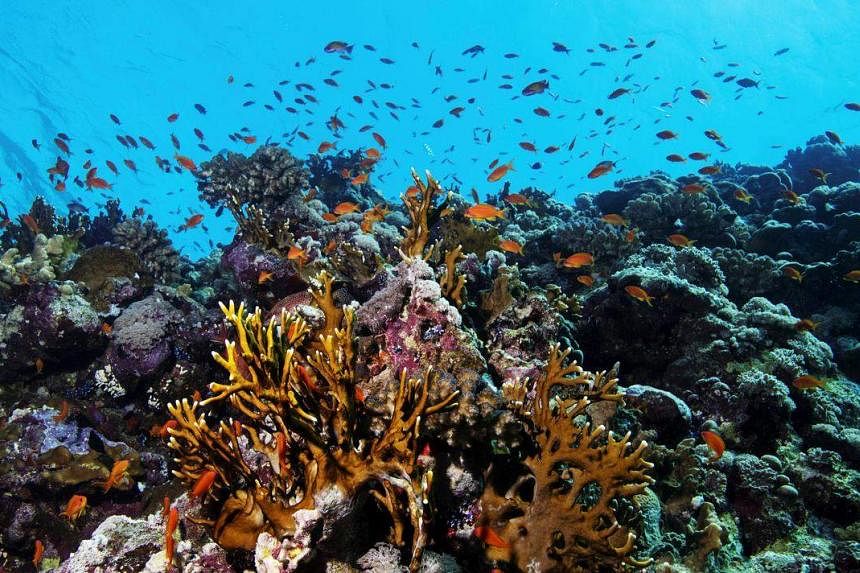Leaders from almost 200 nations will gather in the Egyptian resort town of Sharm-el-Sheikh from Nov 6 to 18 to hammer out details of how countries can take climate action under the Paris Agreement. Audrey Tan, David Fogarty and Cheryl Tan highlight six key issues that will be discussed at COP27, this year’s United Nations climate change conference.
1. Mitigation work plan
What it is:
Mitigation, or efforts to cut planet-warming greenhouse gases in the atmosphere, is a key prong of climate action. An example includes swopping fossil fuels for renewable energy. At COP26, countries agreed to establish a work programme – which is UN parlance for a planned series of activities over a certain period – to help countries set more ambitious climate targets and implement strategies to achieve them over the next decade.
Why is it important?
The sixth assessment report by the Intergovernmental Panel on Climate Change, which was released in full in April 2022, had highlighted the urgency of taking action to avert the harshest impacts of climate change.
In 2022, a spate of extreme weather events around the world – from floods to heatwaves – also highlighted the extent of the problem.
Key issues to be discussed:
Details of this mitigation work programme are expected to be worked out at COP27, including how long it will be and who will be in charge.
Negotiators are also expected to discuss its scope, for example, which topics, sectors or measures it should focus on.
The output of the work programme – whether in the form of reports or recommendations – will also need to be decided. This can be tricky as some countries may view recommendations as being more prescriptive than reports and consider this an infringement on their sovereignty.
2. Climate finance
What it is:
This refers to funding that should be channelled to poorer nations to help them cut greenhouse gas emissions and adapt to climate change impacts that may be more severe and frequent.
Why is it important?
Many developing nations are facing mounting debts, made worse by the aftermath of the Covid-19 pandemic and rising oil prices in the wake of the Russian invasion of Ukraine. Climate finance can help reduce the burden they face and help them meet their net-zero targets.
Key issues to be discussed:
Poorer nations want wealthier countries to make good on their pledge from over a decade ago to channel US$100 billion (S$135 billion) per year by 2020 to green their economies and help them adapt to climate change.
3. Adaptation

What it is:
All nations face impacts from climate change and need to adapt to them, such as building sea walls, cooling centres or providing better drainage. This issue has become urgent as climate impacts intensify.
Why is it important?
Adapting builds resilience, reduces economic losses and saves lives. Investing in adaptation is especially important for the poorest and most vulnerable nations, which struggle to access enough finance to pay for these investments.
Wealthier nations are being pressured to step up adaptation financing since they are responsible for most of the greenhouse gas emissions in the atmosphere.
Key issues to be discussed:
COP26 urged developed nations to at least double their collective provision of adaptation finance from 2019 levels by 2025.
At COP27, poorer nations and especially African nations will be pushing rich nations for more concrete pledges and to clarify when the money will be delivered.
Current levels of adaptation finance are deemed far too little, and this area of climate finance is potentially a make-or-break issue at COP27 after years of foot-dragging by wealthier states.
4. Loss and damage

What it is:
The issue of finance is also closely linked to that of loss and damage – a term used in climate negotiations to describe the irreversible consequences of climate change, such as sea-level rise, that cannot be or have not been reduced by current adaptation efforts.
Why is it important?
Developing countries are often the ones bearing the brunt of climate change impacts, such as flooding and typhoons, despite contributing little to climate change in the first place. The issue, however, is a contentious one as richer countries do not want to accept the liability of climate impacts, and it may also be challenging to assign blame.
Key issues to be discussed:
At COP27, developing nations are pushing for the establishment of a loss and damage finance facility or fund, which would be able to see vulnerable nations compensated for the economic losses from these climate catastrophes.
In 2022, Denmark said it will contribute DKK100 million (S$18.8 million) in funding for loss and damage. During COP26, Scotland pledged £2 million (S$3.2 million) and the Belgian region of Wallonia pledged €1 million (S$1.4 million)
5. Biodiversity

What it is:
Biodiversity refers to the richness of life on Earth across plants and animals.
Why is it important?
Humanity cannot exist without nature, which provides food, oxygen and water. Nature also acts as a major carbon sink, with forests and the oceans soaking up planet-warming carbon emissions.
In 2022, the UN’s biodiversity panel released two major reports that highlighted the importance of nature to humans and the importance of considering how different communities relate to nature.
Key issues to be discussed:
COP27 occurs just before another big UN biodiversity conference called COP15, which aims to set new targets to save nature, such as protecting 30 per cent of the planet’s land and ocean areas.
COP27 will likely reaffirm a pledge made at 2021’s climate conference in Glasgow, which recognised the interlinked global crises of climate change and biodiversity loss, and the critical role of protecting, conserving and restoring nature and ecosystems.
6. Carbon markets

What it is:
At COP26, countries agreed on the rules that will govern the international trade in carbon credits, so countries can use offsets to help meet their climate targets.
Nations can establish bilateral agreements and buy carbon credits compliant with carbon market rules from another country, or with private developers of carbon credit projects based in another country.
Alternatively, countries can also choose to buy credits from a centralised “marketplace” of carbon credits that will be set up and overseen by the UN.
Why is it important?
A well-designed carbon market could allow countries to offset their emissions in a cost-efficient way. Such markets can also unlock billions of dollars in investment in projects that reduce emissions, thereby helping nations meet their climate action plans.
Key issues to be discussed:
The outcome at COP26 provided a broad plan for how the international trade in carbon credits will work, but details were left to future negotiations.
For example, the trade in credits from carbon projects entails the setting up of an administrative infrastructure that involves the creation of a centralised database and accounting framework and registry.
Negotiators will also need to fine-tune the criteria for carbon projects and determine the methodologies for which carbon projects are approved, to ensure that they truly benefit the climate.

